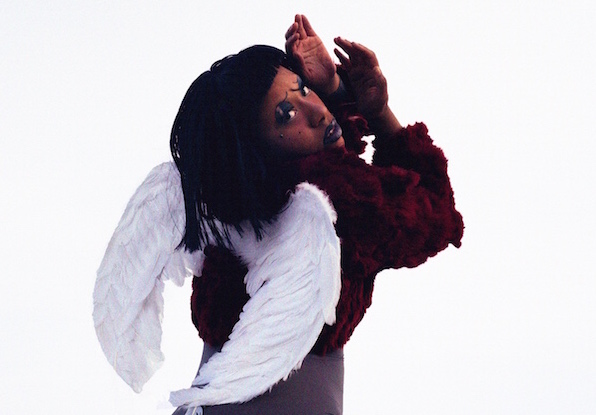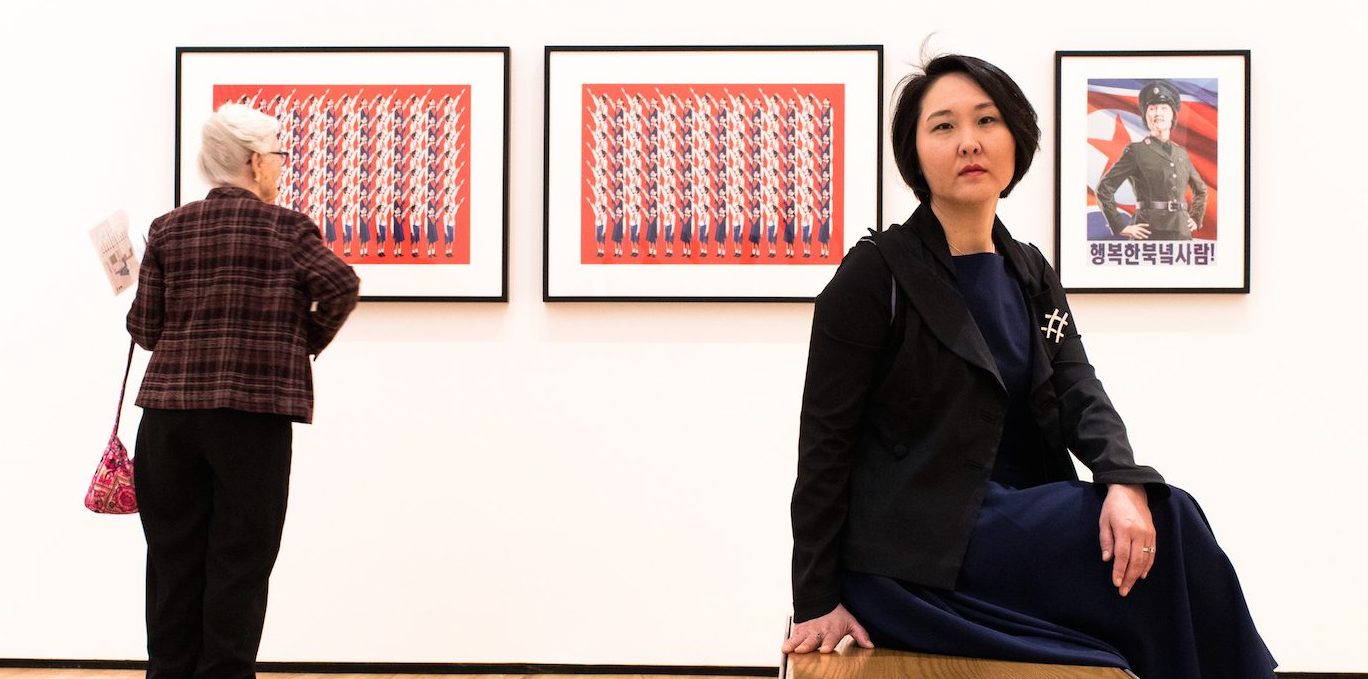An Interview with Tavares Strachan about his new neon commission at the Baltimore Museum of Art by Cara Ober
I met NY-based conceptual artist Tavares Strachan by accident at a Venetian restaurant. It was May of 2017 and I was sitting at an outdoor cafe with two friends looking at menus. We had chosen this particular restaurant for two reasons: close proximity to the Arsenale wing of the Venice Biennale and the plates of seafood coming out of the kitchen were gorgeous. There were two women our age sitting nearby and then two men sat down at the table between us.
The Maître D’ came out and hugged one of the men, exclaiming loudly in Italian like a long lost relative. Before we knew it, we were all drinking champagne in the afternoon sun together and our three tables had been merged into one.
A few bottles in, we discovered that all of us were involved in the art world in different ways. The two women worked for an art auction house in Switzerland. One of the men worked for Art Basel in NY. And the other, the man who had instigated this familial Italian conviviality, Tavares Strachan, was an artist.
He had represented the country of his birth, The Bahamas, in 2013 in the nation’s inaugural pavilion at the 55th Venice Biennale and we had happened upon his favorite restaurant, Galleon, a place where he spent many hours in 2013 while installing and exhibiting. Clearly, the feeling on behalf of the restaurant was mutual. Inside, the walls displayed framed posters and photos of the artist’s Venice exhibition, like a proud parent lauding a son’s success.
When we revealed that we were from Baltimore, Strachan mentioned a tentative future project in the works at the Baltimore Museum of Art, but we didn’t talk much about his work that day. We were too busy eating, drinking, and laughing. However unintended, this sunny afternoon gave me a credible insight into an artist becoming nationally known for subtle messages about inclusivity and visibility, the authority of the written word, and the purposeful structures of power that divide us by class and race. I appreciate it when an artist’s concept and media are consistent with the way he chooses to live his life; treating perfect strangers as friends and placing value upon the conversations that evolve from a chance meeting is not a typical priority in an art world full of hierarchy and competition.
Based in New York, Strachan is a conceptual artist who melds aspects of environmental and biological science to create large scale sculptures and installation, from sculptural neon text pieces, like “You belong here,” glowing on a New Orleans river barge, to video documentation of performance, to the symbolic flooding the Frye Museum in Seattle, all functioning as metaphoric barriers to environmental and cultural history. According to a statement at the Frye, “Many of his projects investigate the nature of invisibility, calling into question the conditions that frame and legitimize certain cultural knowledge and histories while obscuring and erasing others.”
A year later, the project that Strachan casually mentioned as a possibility that afternoon in Venice is now a reality at the BMA. The giant neon sculpture “In broad daylight” presents the eponymous text in an Edwardian cursive and reads like the subtitle to a noir movie unfolding in real time. The work has been installed at the frieze level of the museum’s Ionic porch facing Art Museum Drive, and ironically, will be mostly invisible by day but glowing red at night.
The phrase, “In broad daylight” is most often used to describe a flagrant crime, successfully committed without typical proprietary concealment, alluding to the kind of smooth criminal who dominates structures of power and is rewarded for bad behavior.
Emblazoned on the front facade of the BMA’s John Russell Pope Building resembling a Greek temple, the phrase is a deliberate provocation that can speak to a broad range of audiences. Like a true crime mystery, it conjures up a certain mainstream media vision of Baltimore, whose national reputation is synonymous with violence. However, it also presents a contrasting image of those who hold the power here, including museum and civic leadership, building unequal structures of domination and excess behind closed doors.
Is the sign an invitation to engage with the museum as a partner in Baltimore’s slow march toward social justice or an ironic statement about the flagrant inequity of the art world? I spoke to Strachan by phone to find out more about his ongoing art practice, the ideas that inspire him, and the neon project being celebrated with an outdoor public reception at the BMA on Wednesday, August 8 at 7 pm.

Cara Ober: Given that you are a conceptual artist and much of your work is sculpture rooted in scientific inquiry, why do you also work with text-based neon?
Tavares Strachan: I think it’s important to be bilingual, to be able to speak in a variety of visual ways to get a point across. I think that is why I use the kind of languages that I am using. If I make a sculpture that is invisible and it’s about loss and absence and I make a text work that says “You belong here,” they’re talking about the same things but in different ways. The relationship between the sculpture and the text work are conceptual.
How does your upbringing and background impact your work?
I am from a tiny island [The Bahamas]. When I was growing up, the island was struggling to find its identity. And it’s still waking up from the hangover of imperial rule. It became clear to me that, on a tiny island, you run out of space really quickly, both conceptually and physically.
I also think there’s something about growing up in a place that is nowhere near the center of the world. There is an invisibility that comes with it, and also a curiosity about how knowledge and information are formed. This has always been intriguing to me.
Can you talk about the questions at the core of your work? Although they draw on history, science, and environmental issues, you tend to present subtle or metaphorical messages, pointing to questions rather than answers.
Sure. What is power and how do these structures become formed? How does an established thing become a thing? How do these structures of power become relevant? What is broadly visible and what is built behind closed doors? Who holds the power and why?

Can you talk about your new neon commission, “In broad daylight,” being ceremoniously unveiled tonight at the Baltimore Museum of Art?
Chris Bedford reached out to my studio and commissioned us to do a work on the outside of the building. The phrase resonates with me because it evokes a duality. It’s a little bit tongue-in-cheek, hinting at what historically has gone on inside museums, essentially a home for the powerful, deals happening there that the rest of us are not necessarily privy to.
Do you see this piece as a call for change within this ecosystem of power?
Especially in the art world, people throw around the term ‘social justice’ a lot. I want this piece to speak to a highly sophisticated audience about the injustice that exists in the world, but also to be a direct statement to a broad general audience.
To me, the statement reads as if the people of Baltimore are saying it directly to the museum, asking for what they want from it: accessibility and a voice.
Do you think that museums have to sacrifice power and privilege to change the world? Is this possible or a charade?
Remaking the world requires us all to behave differently. But most of us don’t want to change ourselves to change the world. We don’t want to have to be different or make the changes necessary to do the real work. People are not really trying to change the world because they’re not willing to change themselves.
In commissioning me to make this piece, I think the museum, at least on some level, is saying that it is trying to be better, that it wants to be the voice of the people. In being approached to create it, the phrase “In broad daylight” is a radical statement, especially when you consider the implications of putting it on a museum and the history of the phrase’s usage.
However, we are living in a museum world. When you understand that history and who these museums were originally designed to serve, and also understand the demographics of Baltimore, the phrase takes on a different meaning.
That’s pretty subtle. Can you elaborate?
Isn’t subtlety more inflammatory than saying something plainly? In the long run, doesn’t it feel like it hits you at another place? I want to send a message that is going to reach out over time, not create an immediate reaction.
Do you envision this piece reinforcing a new ‘social justice and equity’ agenda from a museum that wants to claim it, especially across the class divisions that have historically been enforced in Baltimore through structural racism and sexism, ingrained in museum culture?
For the most part, the museum’s agenda is clear. To me, the more interesting question is, what is the audience’s agenda? To me, museums are supposed to be the servant of the public, and I want to help cultivate a well informed audience base.
So then the question is, who is the public? Who represents the public? How does it affiliate with Baltimore? And how do we make those who have been historically overlooked visible?

“In Broad Daylight” will be installed at the BMA for nine months.
Artist Bio: Tavares Strachan was born in 1979 in Nassau, Bahamas. He received a BFA from the Rhode Island School of Design, where he studied glass, and an MFA in sculpture from Yale University. Strachan is the recipient of the 2008 Tiffany Foundation Grant; the 2007 Grand Arts Residency Fellowship; the 2006 Alice B. Kimball Fellowship; the 2003 Distinguished Student Award, RISD; became a 2000 Roots Junkanoo Group, Member; the 2000 Queen Elizabeth Arts/Poetry Award; the 1998 Governor’s Award, The Governor General of the Bahamas; and the 1996 National Seal of the Bahamas, Stamp Design Award.
Top Photo by Maximilian Franz for the BMA






